We like everything about carbon-steel pans, particularly the chemical-free nonstick part. But home cooks won’t put their pots and pans through the same abuse a restaurant kitchen does. And it turns out that abuse—or at least heavy use—is key to creating the nonstick surface. We wanted to know whether we could bring these pans home and love them as much as chefs do.
Carbon-steel pans are relatives of cast-iron cookware. Both are made from iron, but cast iron contains slightly more carbon, giving it a rougher surface and more brittle structure. Carbon-steel pans, with more iron and less carbon, are stronger, lighter and smoother.
They also are younger. While cast-iron pans have been around since at least 200 A.D., when they were used in salt making in China, carbon-steel cookware only came along in the 19th century. That’s when steam power and rolling mills made it possible to cut the pans from sheets of metal. But they’ve been slow to catch on outside restaurant kitchens.
Smokin'! Seasoning Carbon Steel
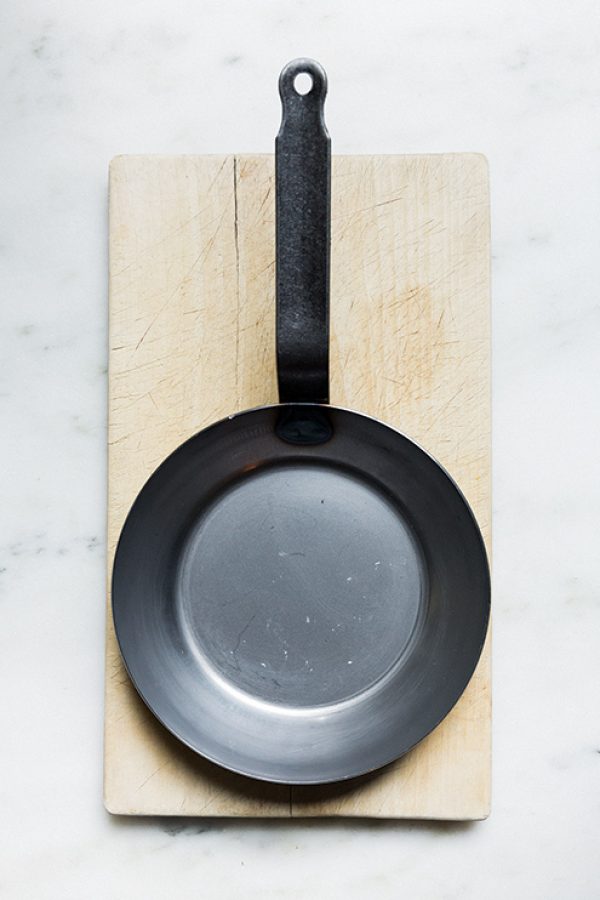
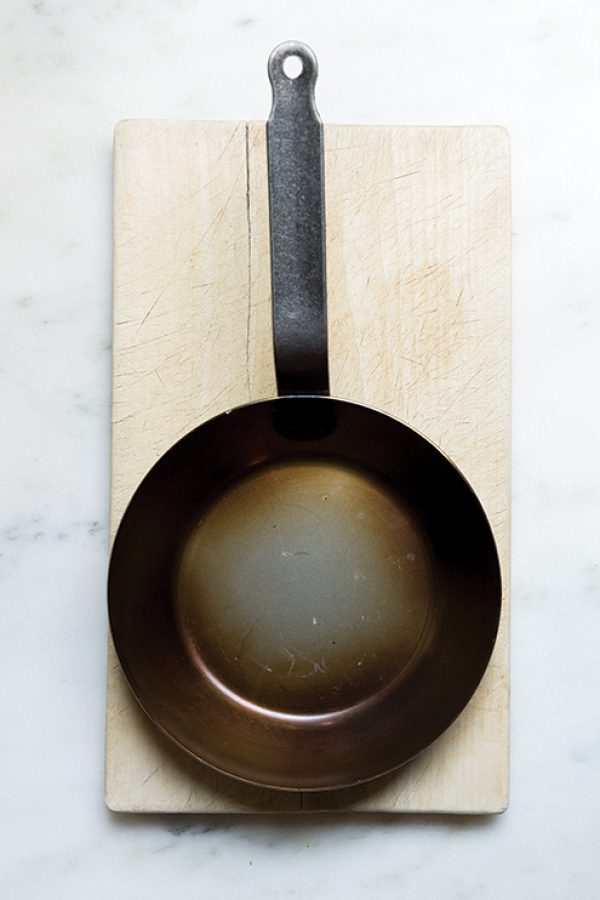
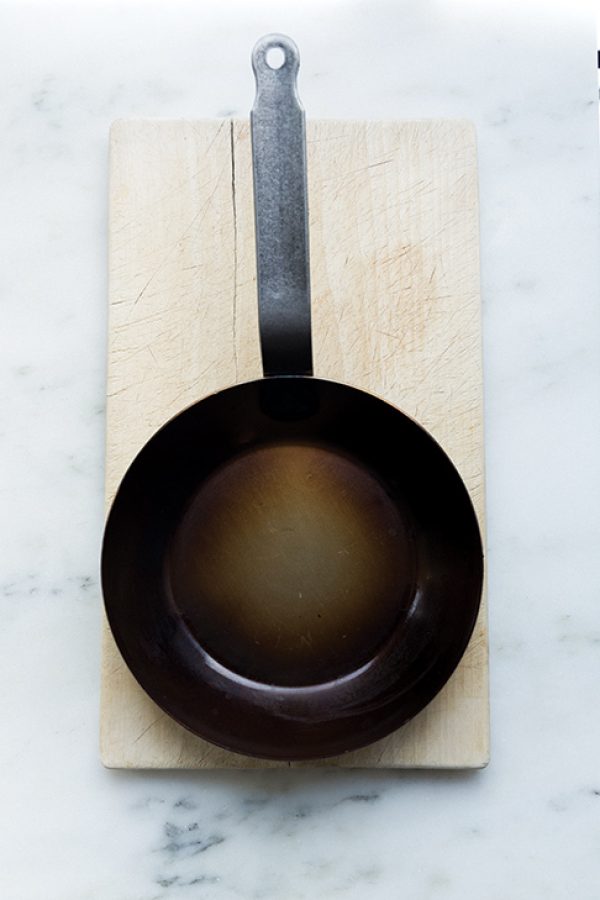
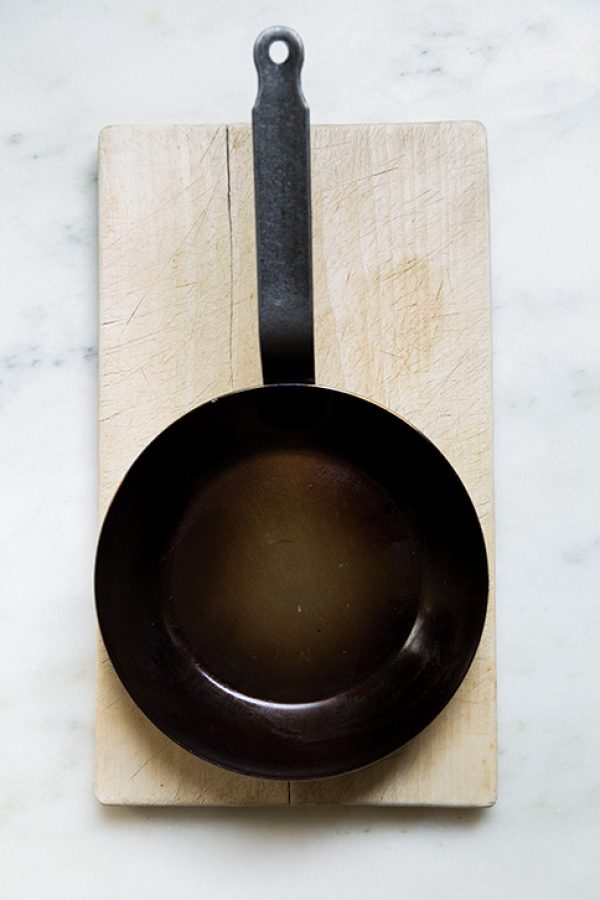
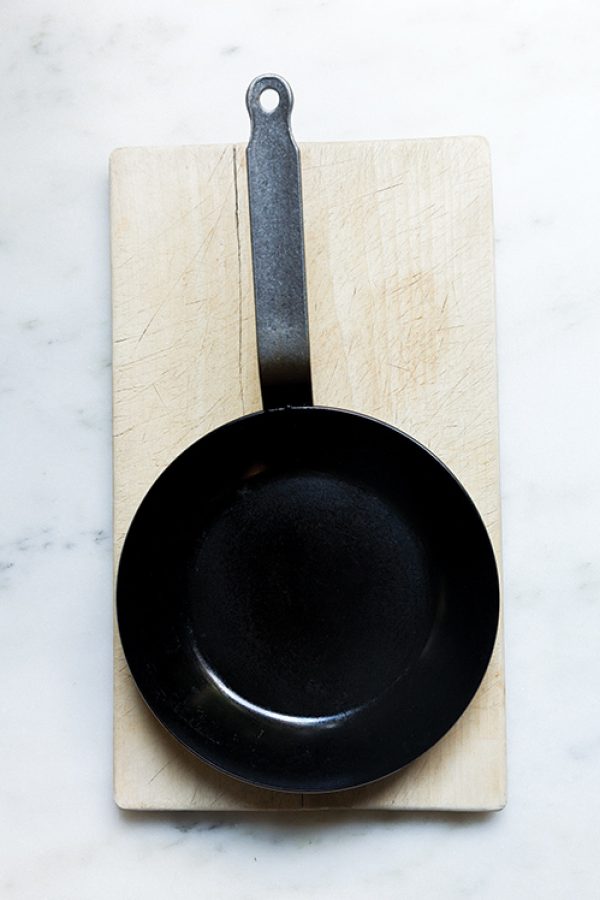
As carbon-steel pans develop a protective and natural nonstick seasoning, they go from grey-silver to brownish-black. Wash a new carbon-steel pan with hot soapy water and a scrubber pad to remove any factory oil or wax coating. Set the pan over medium heat. Add 1 tablespoon of vegetable oil, then use a paper towel to spread the oil in a thin, even layer over the pan. Leave the pan over the heat until it smokes. Hold it at this stage for 1 minute, then use a paper towel held with tongs to carefully wipe the pan clean of oil. Repeat the second and third steps until the pan develops a golden patina, 3 to 5 repetitions. The pan may look blotchy.
When home cooks need a nonstick surface, they often grab skillets treated with the chemical polytetrafluoroethylene (PTFE), a surface that scratches easily and generally can’t stand up to high oven temperatures. Though often more heat-resistant, even the newer generation of nonstick coatings—many of them ceramic- or silicon-based—still chip and erode.
But with carbon-steel cookware, chefs seem to have found a way to have sturdy nonstick pans minus the worrying chemicals. Could we translate it to home kitchens?
Like cast-iron pans, carbon-steel skillets need to be seasoned, a process in which the metal is coated with oil, then heated to high temperatures. This serves a dual purpose: creating a slick surface and protecting the pan from rusting (because unlike stainless steel, aluminum and copper, iron oxidizes easily).
In a restaurant, this seasoning happens through the natural wear and tear of daily use. High heat changes the oil, causing it to polymerize, or form long chains of molecules that like to bond to metal. That bonding is important.
Protein—your eggs and chicken breasts, for example—also loves to bond with metal, particularly iron. But when oil polymers have bonded with the metal pan first, there are fewer iron molecules available for your food to stick to. And that’s where the natural nonstick coating comes from.
You can even see the seasoning process progress. As they season, carbon-steel pans turn from gray-silver to brownish-black. It may not be pretty, but it sure gets your eggs sliding around.

Milk Street Basics
Wok Science: How the Chinese turn steel into nonstick
- Before each use, set the pan over medium heat. Add 1 teaspoon of vegetable oil, swirl to coat, then heat until smoking. Carefully swirl the smoking oil in the pan over the heat for 1 minute.
- Remove the pan from the heat and use a paper towel held with tongs to wipe out the oil. Allow the pan to cool for 3 to 5 minutes, then add the oil or butter for cooking. Don’t skip the cooling step or the pan will be too hot and burn the cooking fat.
- After cooking, clean the pan with a wet sponge (and a little coarse salt, if needed, to scrub away stubborn bits), dry it well and wipe lightly with oil before storing.
Looking for a faster way to season carbon-steel pans for home use, we considered an Asian method. Many woks are made from carbon steel, and they’re seasoned using the “Chinese burn method.” This involves getting the pan exceedingly hot, then swirling a generous amount of oil around in it until it smokes and darkens the surface of the pan. The intensely hot oil polymerizes and leaves behind a nonstick black coating. But swirling hot oil isn’t such a safe idea at home.
After a bit of trial and error, we replicated basic seasoning by setting the pan over medium heat and adding a small amount of vegetable oil (polyunsaturated oils work best in this process; they oxidize readily when heated in the pan). We wiped the oil evenly over the surface of the pan, then heated it until the oil smoked (for vegetable oil, between 435°F and 450°F). We held the pan in this state for 1 to 2 minutes (don’t go longer or the oil can catch fire), then wiped the pan clean. After repeating this four or five times, our skillet had a great brownish patina.
Our process certainly was speedier and safer, but we still weren’t happy. When we fried an egg—our gold standard for nonstick success—we still got some sticking. We considered repeating our wiping and heating process, but after doing that a dozen or so times we gave up.
For a while, we were stumped. Then we had our “Aha!” moment. The burn method was too dangerous for our tastes, but the Chinese have another trick for keeping their woks nonstick: They do a mini-seasoning every time they use them. Chinese cooks keep used cooking oil in a pot by the stove. Each time they cook, they ladle oil into the wok, then heat it to the smoking point and swirl it around the pan before pouring it back into the pot. They then add fresh oil to the wok for cooking. Why does this matter? Cooking and cleaning naturally wear down the nonstick coating. This quick seasoning prior to cooking fills in any divots that have formed in that coating.
We still didn’t want to advocate sloshing around hot oil. What works in a high-sided wok isn’t safe in a shallow skillet. But we found that heating and swirling just 1 teaspoon of oil for 1 to 2 minutes, then wiping the pan clean before adding fresh cooking oil gave us the same results.
By the way, after you’ve gone to the trouble of seasoning your pan, make sure you treat it well. Never plunge a hot carbon-steel pan into cold water; the thermal shock can crack the pan. And avoid soap; it will dissolve the seasoning.



